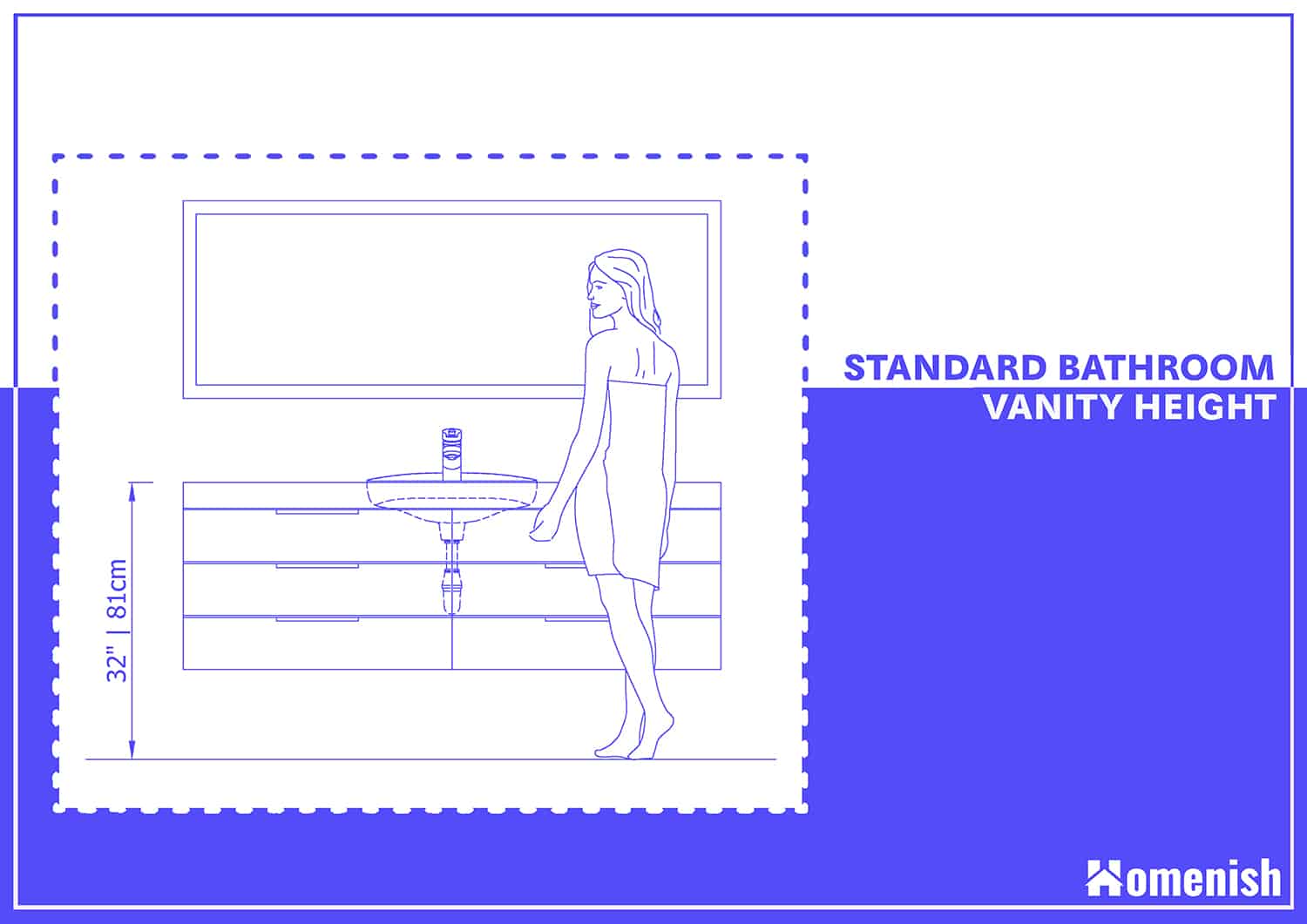Understanding Comfort Height Vanities

Comfort height vanities are a modern bathroom design feature that prioritises user comfort and convenience. Unlike traditional vanities, which often force users to bend over awkwardly, comfort height vanities are designed to be at a height that allows for a more natural and ergonomic posture. This makes them a great choice for people of all ages and abilities, particularly those with limited mobility or those who simply want to make their bathroom experience more comfortable.
The Standard Height of Comfort Height Vanities
Comfort height vanities are typically designed to be 34-36 inches tall, which is significantly higher than traditional vanities, which typically stand at 30-32 inches. This difference in height can make a big difference in terms of comfort and ease of use.
Ergonomic Advantages of Comfort Height Vanities
Comfort height vanities offer several ergonomic advantages that can improve your bathroom experience and reduce strain on your body.
- Reduced Strain on the Back: With a higher vanity, you can stand upright while washing your hands or brushing your teeth, reducing the strain on your back muscles. This is particularly important for people who spend a lot of time in the bathroom or who have back problems.
- Reduced Strain on the Knees and Hips: Comfort height vanities also reduce the strain on your knees and hips by eliminating the need to bend over excessively. This is beneficial for people with knee or hip problems, as well as for those who want to avoid putting unnecessary stress on these joints.
- Improved Posture: By allowing you to stand upright, comfort height vanities can help you maintain good posture, which can benefit your overall health and well-being.
Choosing the Right Comfort Height Vanity: Comfort Height Bathroom Vanity
Finding the perfect comfort height vanity for your bathroom is a bit like finding the right pair of jeans: you want something that fits you well, looks good, and is comfortable. You’ll need to consider your bathroom space, your personal style, and your budget to make the right choice.
Vanity Size and Style
The size and style of your vanity should be determined by the size of your bathroom and your personal preferences. For smaller bathrooms, a single vanity with a compact countertop is a good option. Larger bathrooms can accommodate a double vanity, which provides ample space for two people to get ready at the same time.
A freestanding vanity is a good choice for those who want a more modern look, while a wall-mounted vanity is a good option for those who want to maximize floor space.
- Single vanity: Ideal for smaller bathrooms or those who prefer a minimalist look.
- Double vanity: Provides ample space for two people to get ready at the same time, perfect for larger bathrooms or shared spaces.
- Freestanding vanity: Adds a touch of elegance and sophistication to any bathroom.
- Wall-mounted vanity: Maximizes floor space and creates a sleek, modern look.
Installation and Maintenance

Installing a comfort height vanity is a straightforward process, but it’s crucial to follow the right steps to ensure it’s installed correctly and securely. This will guarantee its longevity and prevent any issues down the line.
Installation Process
Installing a comfort height vanity involves a few key steps. It’s essential to have the right tools and materials on hand, including a level, tape measure, drill, screwdriver, plumbing wrenches, and silicone sealant.
- Prepare the area: First, you need to clear the area around the vanity. This includes removing any existing fixtures or cabinets and ensuring the floor is clean and level.
- Install the vanity base: Next, you’ll position the vanity base against the wall and mark the location of the mounting holes. Drill pilot holes and secure the base to the wall using the provided hardware.
- Install the countertop: Once the base is secured, you can install the countertop. This typically involves attaching it to the base using clips or brackets.
- Connect the plumbing: Connect the plumbing to the vanity by attaching the sink drain to the drain pipe and the water supply lines to the faucet.
- Install the faucet: After the plumbing is connected, you can install the faucet. This involves tightening the faucet to the countertop using the provided tools.
- Finish up: Finally, you can install the vanity hardware and add any decorative elements.
Importance of Ventilation and Waterproofing, Comfort height bathroom vanity
Proper ventilation and waterproofing are crucial during vanity installation to prevent moisture damage and ensure a healthy environment. Ventilation helps to remove moisture from the bathroom, reducing the risk of mold and mildew growth. Waterproofing prevents water from seeping into the vanity base and causing damage.
- Ventilation: Ensure there’s adequate ventilation in the bathroom. This can be achieved through an exhaust fan or a window that can be opened.
- Waterproofing: Apply a waterproof sealant around the edges of the countertop and where the countertop meets the vanity base. This helps prevent water from seeping into the vanity and causing damage.
Maintaining the Vanity
Regular maintenance is key to ensuring the longevity of your comfort height vanity. This involves cleaning the vanity regularly and checking for any signs of damage.
- Cleaning: Clean the vanity regularly with a mild cleaner and a soft cloth. Avoid using harsh chemicals or abrasive cleaners, as these can damage the finish.
- Checking for damage: Regularly check the vanity for any signs of damage, such as cracks, chips, or loose screws. Repair any damage promptly to prevent further deterioration.
